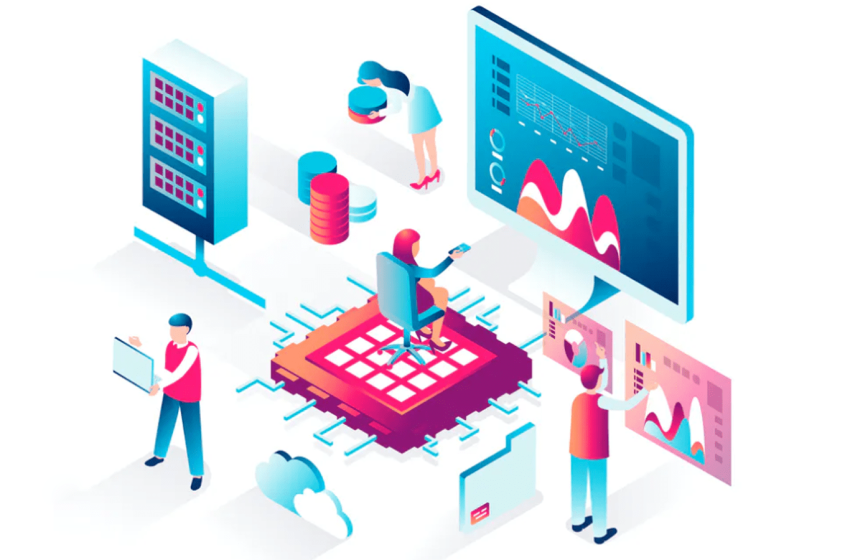Integrating NetSuite with Boomi EDI: A Comprehensive Guide

Has your online business ever failed to fulfil customer demand on time due to outdated data? Today, for efficient operations, it is necessary to have seamless data exchange among different partners and systems. Cloud ERP systems like NetSuite allow businesses to manage the whole process from customer request to delivery. However, to harness its advantage, you need Boomi EDI integration for external systems (payment, order, invoice).
NetSuite with Boomi EDI is a powerful combination to operate smoothly with accurate information transactions.
Learn how to integrate NetSuite with Boomi EDI and why it is necessary in today’s digital world.
What are the advantages of integrating NetSuite and Boomi for EDI?
Electronic Data Interchange is a digital business document exchange technology replacing the traditional method of sharing data. It automates the flow of information, saves costs, and speeds up the whole operation.
Online transparency and flexibility of Boomi EDI integration make it the most used tool in industries like retail, logistics, and healthcare. Such industries require real-time data to provide customer satisfaction.
Boomi ensures the successful NetSuite integration with an EDI platform for smooth data exchange between multiple systems.
Here are a few benefits of the Boomi EDI integration:
1. Real-Time Data Exchange
The Boomi integration framework provides real-time data transfer between NetSuite and EDI partners. For instance, retailers using NetSuite can receive updates on shipping from suppliers and then adjust the inventory as per the requirement. This helps the retailers fulfil the customer demand on time.
2. Increased Efficiency
EDI transactions like invoices, purchase orders, or shipping updates can be automated and reduce the need for manual efforts. Businesses can focus on expanding their operations and customer satisfaction by eliminating repetitive tasks and human errors with automation.
3. Improved Accuracy
Automation reduces the need for manual data transfer and reduces the risk of errors like missing data, duplications, or incorrect entries. Wrong data exchange can affect your business, leading to huge asset and customer losses.
4. Cost Savings
Businesses can save a lot of investment related to manual labour, paper-based documentation, postage, human error, etc. by automating the EDI process. Retailers have reported a 25% cost reduction with this powerful integration.
Step-by-Step Guide to NetSuite and Boomi EDI Integration
To integrate NetSuite with Boomi EDI, follow the step-by-step procedure below:
Step 1: Define your EDI requirements.
Before the Boomi EDI integration, identify your trading partners’ EDI standards. Then do the data mapping to match the information in NetSuite with the existing document.
You can specify which EDI transactions you want to automate, like purchase orders, invoices, or shipping notifications.
Step 2: NetSuite Configuration
Begin the configuration by creating entities like EDI partners, EDI documents, and EDI transactions in NetSuite. After that, work on the EDI settings by defining the EDI communication protocols and error-handling mechanisms. If you, as a business, want to store additional EDI-specific data, create custom fields within NetSuite, ensuring seamless data exchange.
Step 3: Boomi EDI Configuration
To begin with Boomi integration, use Process Builder to design workflows that specifically handle the EDI transactions. You don’t need to manually involve yourself in the data exchange between NetSuite and EDI partners; the workflow will handle it automatically.
To create a connection between Boomi and NetSuite, use Boomi’s NetSuite connector. After the configuration to handle EDI data translation, configure EDI adapters.
Step 4: Test and Validate the Integration
After configuring booth NetSuite and Boomi EDI, it is time to test whether it is successful or not. Create EDI documents to test the integration in real-time functionalities. Send and receive the created document for testing and verify whether the data is exchanged in the right format and accurately with the trading partners.
After testing, validate the sample transactions.
Step 5: Deploy and Monitor the Integration
After successful testing, deploy the NetSuite and Boomi EDI integration to the live production environment. Monitor it consistently with Boomi monitoring tools to ensure optimal performance without error.
To manage post-implementation challenges, establish a support team to work on mapping updates, adding new trading partners, checking data accuracy, etc.
NetSuite-Boomi EDI Integration for Different Industries
Let’s understand the benefits of integrating NetSuite with Boomi EDI and how combining both technologies affects certain industries.
● Retail Industry
When a retail company integrated NetSuite with Boomi EDI to automate the purchase flow between suppliers and distributors, the real-time data of Boomi helped the retailer with order accuracy and customer satisfaction. With the help of updated data, the company reduced order processing time by 30%.
● Healthcare Industry
To optimize the claims processing with health insurance companies, a healthcare services integrated NetSuite and Boomi. By automating the whole document submission claims through Boomi EDI, the service provider was able to reduce administrative costs, increase revenue due to quicker settlements, and enhance customer satisfaction.
● Manufacturing Industry
The manufacturing firm took advantage of NetSuite and Boomi EDI integration to automate materials and production data exchange with suppliers. The real-time data helped to adjust production schedules based on inventory availability and enhance delivery times.
Conclusion
Businesses can successfully integrate the ERP systems with EDI workflow by following the above guide. If they don’t have a team of experts, they can hire Boomi consultants to leverage the benefits of both ERP and Boomi EDI. Make your retail, supply chain, and healthcare finance business successful with seamless and updated data exchange between different partners.

